Employee Retention Through Office Design: The Hidden Benefits
Picture this: Two equally qualified candidates receive identical job offers from competing firms. One chooses the company with the sterile white cubicles and fluorescent lighting. The other selects the workplace with natural timber features, living green walls, and spaces that actually make them feel energised rather than drained. Which business do you think struggles more with staff turnover?
The answer might surprise many Australian business owners who still view office design as a ‘nice-to-have’ rather than a strategic retention tool. But here’s the reality: your office interior is silently influencing every hiring decision, performance review, and resignation letter that crosses your desk.
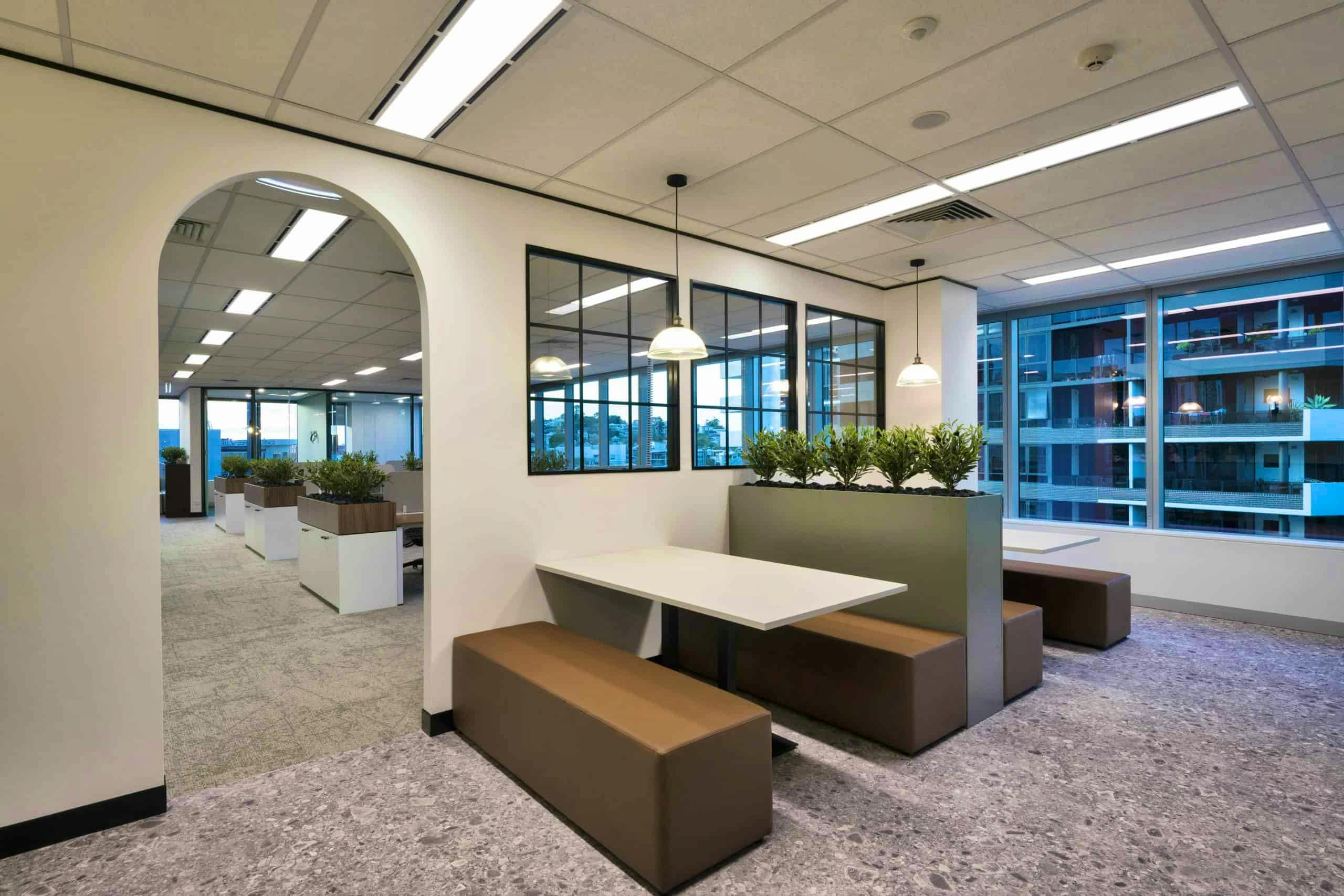
In today’s competitive job market, talented employees don’t just work for pay cheques; they’re seeking environments that support their well-being, boost their productivity, and reflect their values. The companies that understand this are winning the talent war, while those clinging to outdated office designs are losing their best people to more enlightened competitors.
Recent research reveals compelling evidence that smart business owners are already acting on: companies investing in employee-centric office design see significant improvements in retention rates, with some businesses reporting up to 15% increases in staff staying power. But what specific design elements make the difference between an office that retains talent and one that repels it?
1. Biophilic Interior Design Elements
The integration of natural elements into office interiors isn’t just aesthetically pleasing; it’s scientifically proven to boost employee satisfaction. Biophilic design can boost productivity by 15%, while incorporating nature into office settings can reduce stress and foster creativity.
Practical Applications:
- – Install living green walls as striking feature elements that purify air whilst creating visual calm
- – Specify natural materials like Australian timber ceilings, stone feature walls, and bamboo flooring
- – Incorporate interior water features such as fountains for sound masking and tranquillity
- – Strategically place plants, including desk plants, large statement planters, and hanging gardens
- – Select nature-inspired artwork, textures in soft furnishings, and organic patterns in wallpapers
The investment pays off: research found that higher usage of vegetation to improve overall aesthetics added approximately 7% to the perceived value of a space, making your office more attractive to both current and prospective employees.
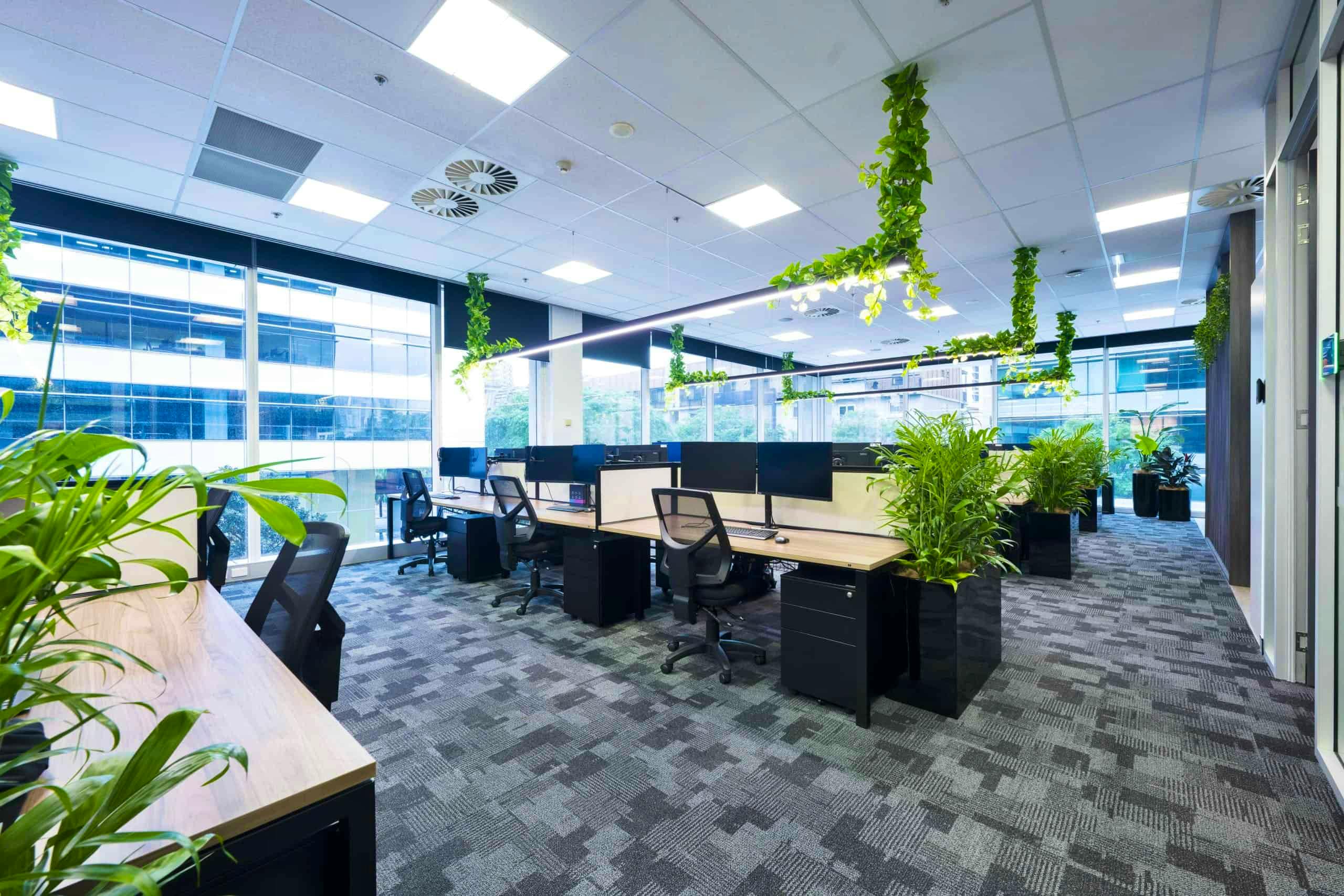
2. Strategic Colour Psychology
Colour isn’t just decoration, it’s a powerful psychological tool that directly impacts employee mood and performance. Research indicates that employees often feel their productivity would improve with changes to their office colour scheme, yet many offices still rely on uninspiring neutral palettes.
Colour Strategy by Function:
- – Blue accents in focus areas: Blue has been shown to improve concentration, stimulate thinking, and provide mental clarity
- – Green tones in relaxation spaces: Green evokes feelings of serenity and helps reduce anxiety and eye strain whilst improving focus and concentration
- – Yellow highlights in creative zones to stimulate optimism and innovation
- – Warm earth tones in social areas to encourage collaboration and comfort
Apply these principles through furniture selection, feature walls, carpeting choices, and soft furnishings that support your team’s psychological well-being whilst reinforcing your brand identity.
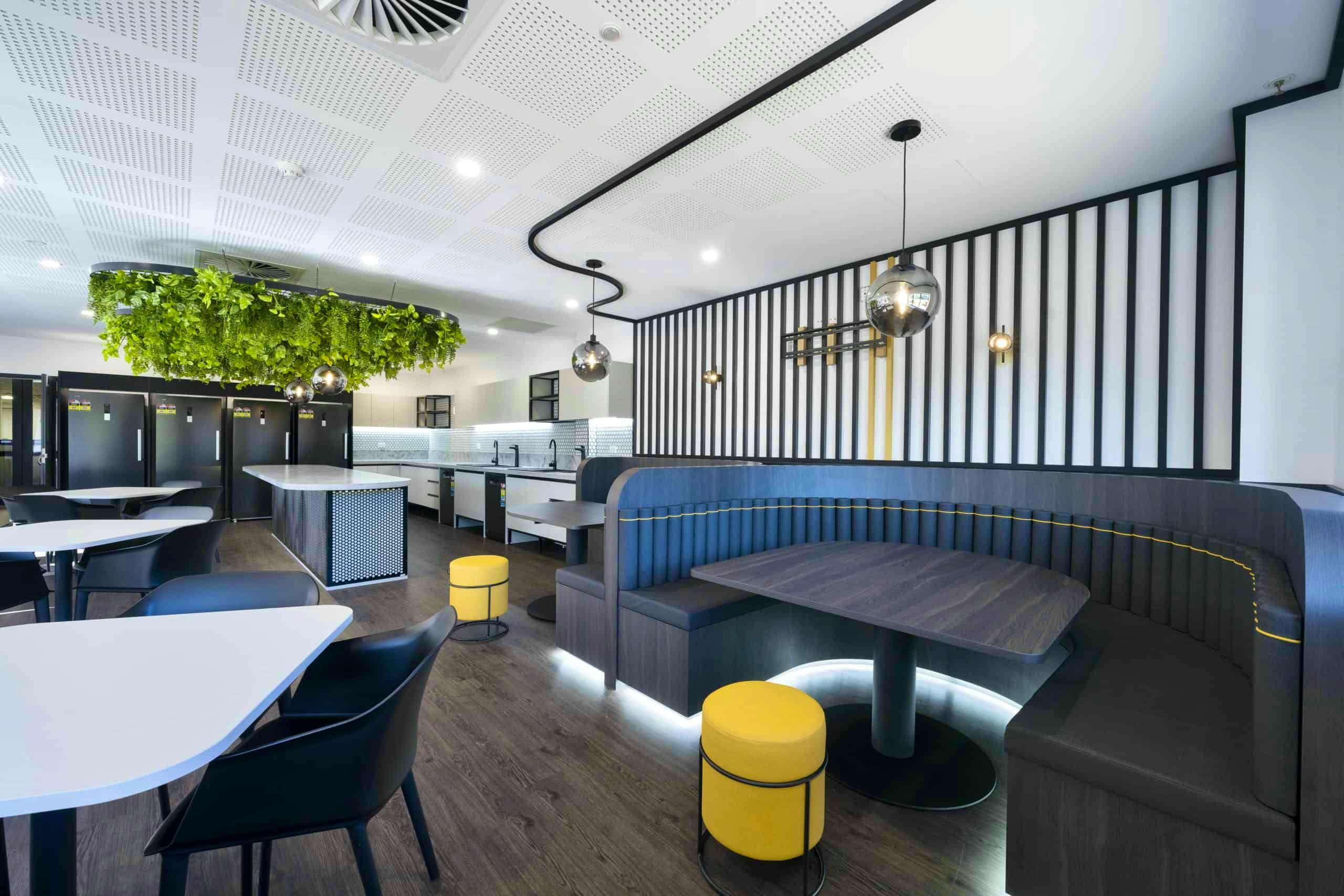
3. Circadian Rhythm Lighting Systems
Poor lighting doesn’t just strain eyes, it disrupts sleep patterns and impacts overall health. Office workers who received high circadian stimulation in the morning reported better sleep and fewer depressive symptoms than those who received low circadian stimulation.
The science is clear: employees sleep better at night when exposed to blue-enriched electric lighting during the day, whilst natural light in office spaces leads to higher worker productivity and increases employee satisfaction.
Implementation Strategies:
- – Install tunable LED systems that automatically adjust colour temperature; cool blue morning light (5000K-6500K) transitioning to warm amber tones (2700K-3000K) in the evening
- – Maximise natural light through strategic workstation placement near windows
- – Use light-reflective interior surfaces like pale wall colours and glossy finishes
- – Integrate adjustable task lighting for individual control
- – Design ceilings that optimise light distribution without compromising acoustics
This investment in lighting quality demonstrates your commitment to employee health whilst reducing energy costs through smart daylight harvesting.

4. Acoustic Interior Design Solutions
Noise pollution is a silent productivity killer. Due to workplace noise distractions, employees lose an average of 86 minutes per day.
The solution lies in thoughtful interior design choices that address sound without compromising aesthetics.
Acoustic Design Elements:
- – Specify acoustic ceiling treatments, including decorative sound-absorbing panels and suspended baffles
- – Choose soft furnishings strategically: acoustic carpets, upholstered furniture, and sound-dampening curtains
- – Integrate acoustic phone booths and quiet pods as architectural features
- – Zone your layout to separate collaborative areas from concentration zones
- – Select materials that absorb rather than reflect sound
Interestingly, plants absorb sound and have been used for years as barriers against noise pollution, providing a natural solution that combines biophilic and acoustic benefits.
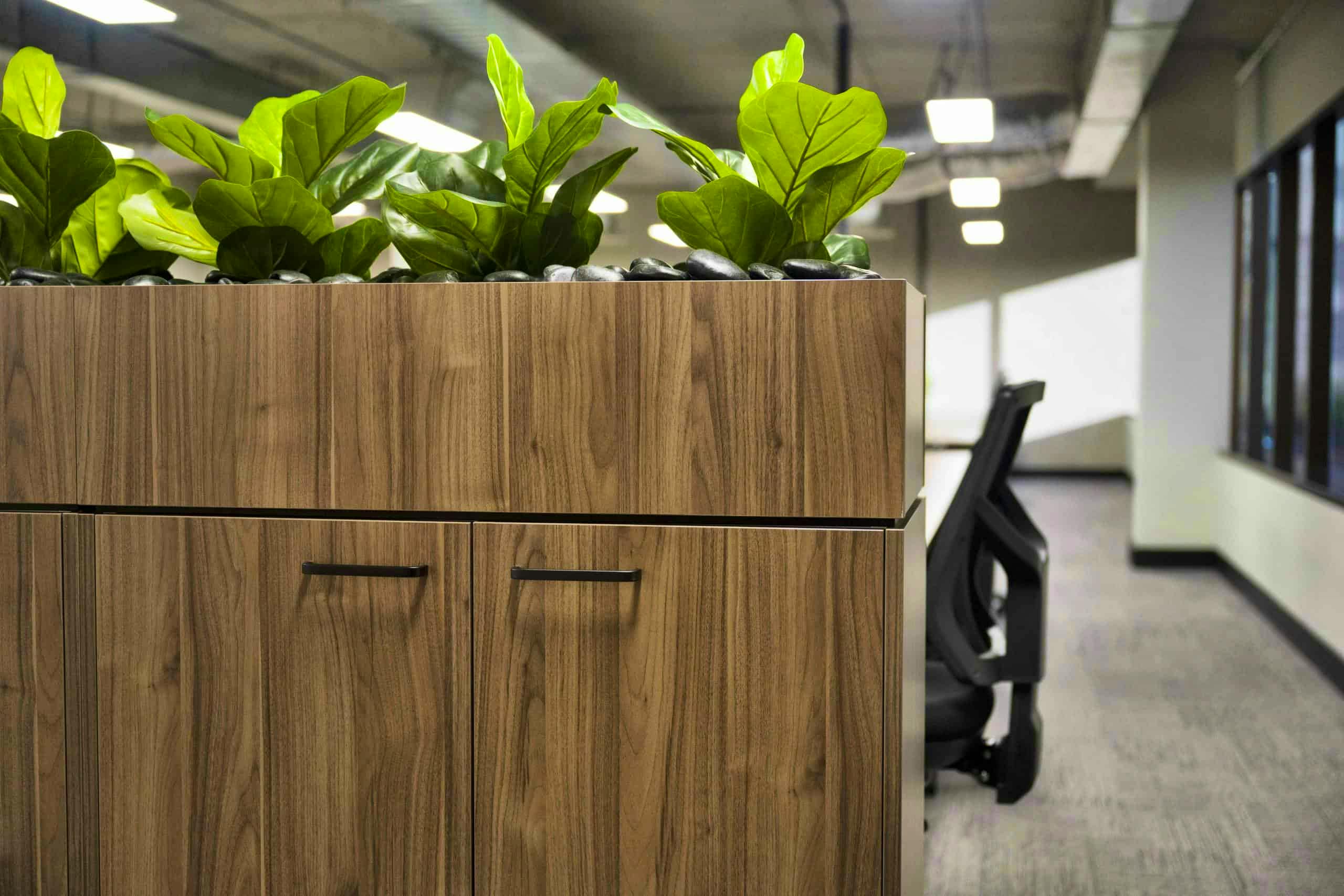
5. Flexible Multi-Functional Layouts
Today’s employees expect choice and autonomy in how they work. Activity-based workspace design empowers employees by offering diverse spaces tailored to specific tasks, which can help boost employee retention.
The Activity-Based Working Model allows employees to relate to a multitude of individuals and encourages socialisation, strengthening the community and emotional health of employees.
Flexible Design Solutions:
- – Invest in modular furniture systems with mobile workstations and height-adjustable desks
- – Create multi-purpose spaces; café areas that convert to meeting spaces, quiet zones with transformable furniture
- – Install moveable architectural elements like sliding panels and temporary dividers
- – Provide diverse seating options from traditional desks to lounge areas and collaboration benches
- – Integrate technology-friendly furniture with built-in charging and cable management
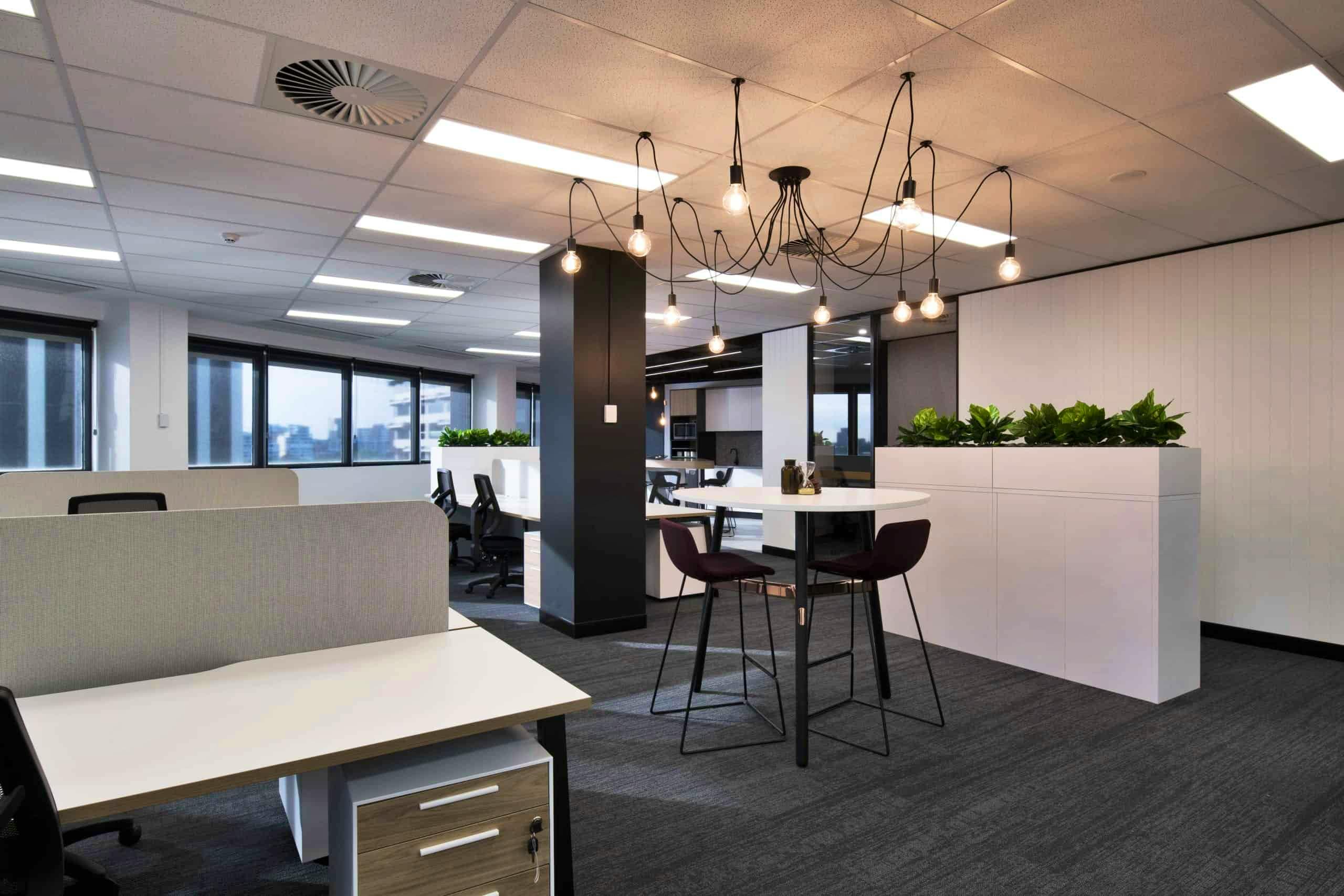
The Bottom Line
Employee retention through office design isn’t just about expensive renovations, but about understanding how thoughtful interior choices impact human well-being. These five design strategies work together to create environments where employees genuinely want to spend their time, leading to increased loyalty, reduced turnover costs, and stronger business performance.
Your office fitout is an investment in your people. Make it count. Get in touch today to chat to our design team.
